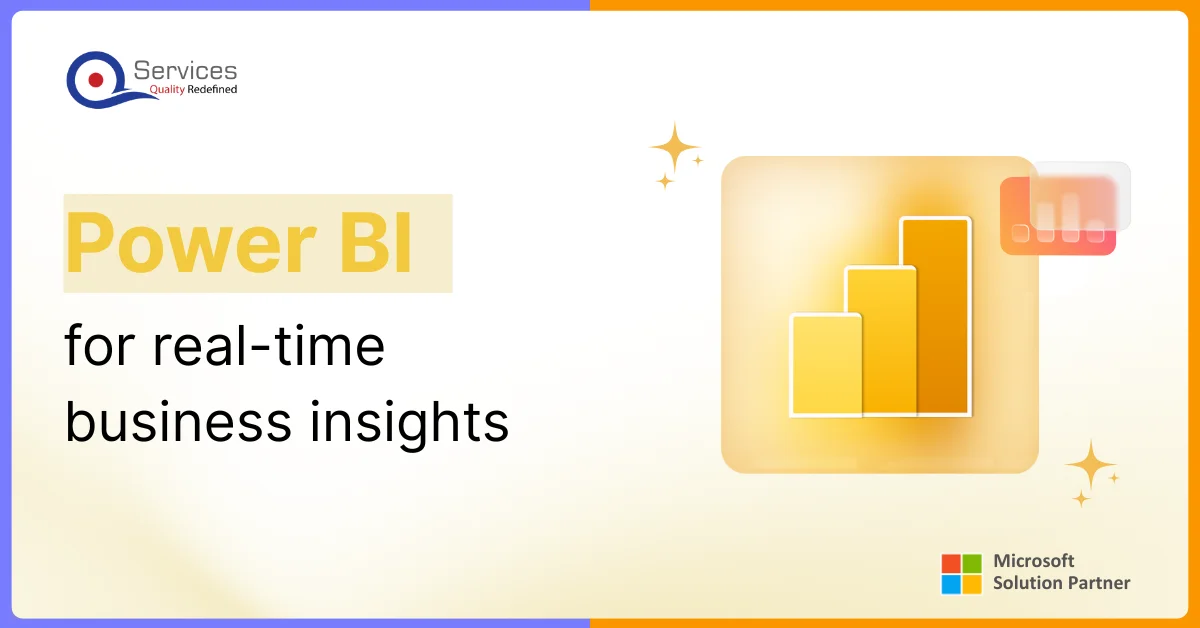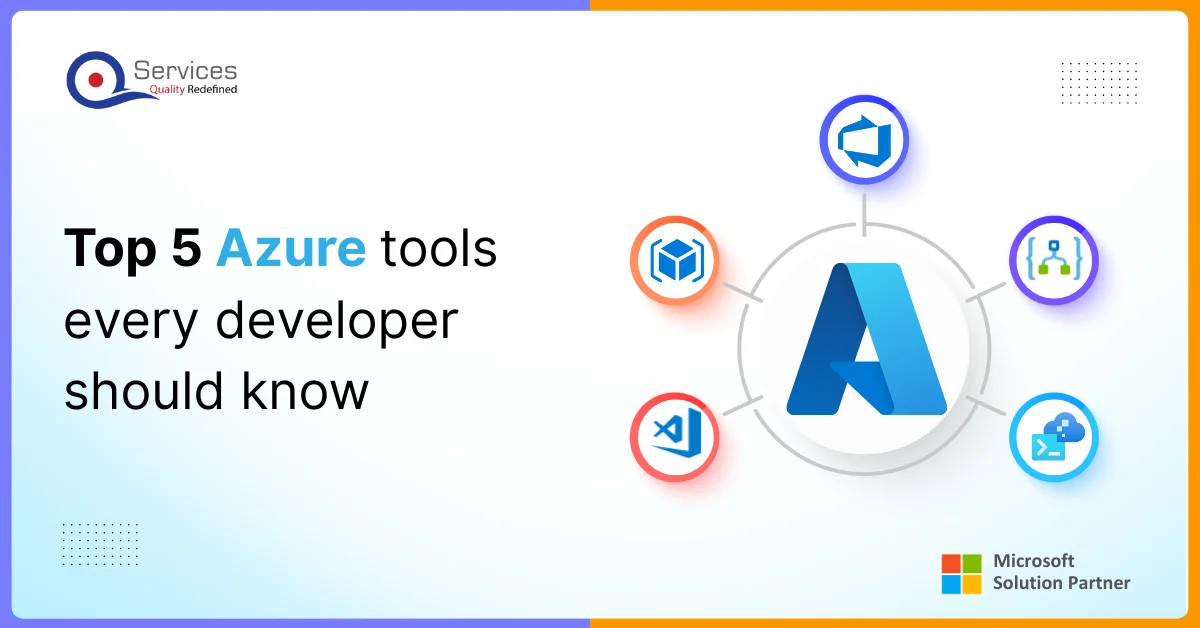
Home » Transforming Manufacturing with Azure IoT Solutions

As Microsoft’s CEO Satya Nadella aptly puts it, “IoT is reshaping industries by enabling smarter operations and driving innovation.”
Internet of Things (IOT) has become a game-changer across every industry, including manufacturing. Are you intrigued to know that how this technology can transform manufacturing operations? In manufacturing, IoT is enhancing efficiency and transforming processes in ways we couldn’t have imagined just a few years ago.
For clear understanding let’s consider a factory where several machines are equipped with sensors that provide real-time performance data. This means manufacturers can predict maintenance needs before issues arise, significantly cutting downtime. But how can they leverage this technology to optimize their manufacturing and meet evolving customer demands?
This is where Azure IoT steps in.
In this guide, we’ll discover how Microsoft Azure IoT transforming manufacturing industry and making a huge impact on it.
Manufacturing today is facing several challenges that can hinder productivity. Let’s break down these challenges:
Traditional manufacturing processes often rely on manual monitoring and control. As human oversight is prone to errors and slower response times which lead to inefficiencies and delays. Like if a machine starts to malfunction, it can take a while for someone to notice and address the possible issue which can cause delays.
We all know that how crucial is regular maintenance in manufacturing, but sometimes unexpected breakdowns lead to costly repairs and downtime. let’s take an example of a critical piece of equipment failing unexpectedly, in that case not only you have to pay for repairs, but the halt in production can also lead to significant financial losses.
Today’s customers are more demanding than ever. They expect higher from their vendor in terms quality products, customization and faster delivery times. This puts pressure on manufacturers to constantly improve their processes and adapt to changing market needs. It can be challenging to achieve with traditional manufacturing methods.
IoT solutions collect real-time data from sensors on manufacturing equipment which helps to monitor performance, forecast maintenance needs, and optimize operations. Think of a factory where machines have sensors that track temperature and vibration. If a machine overheats, the sensor alerts the maintenance team to fix it before it breaks down, reducing downtime and costs.
By leveraging real-time data, IoT can anticipate equipment needs before issues arise. For example, sensors on machines can pick up early signs of wear and tear, allowing manufacturers to address problems before they lead to breakdowns which keep their production line run smoothly and helps avoid costly repairs.
IoT also automates repetitive tasks, which cuts down on human error and speeds up operations. For example, on an assembly line, IoT-enabled robots can handle welding and painting jobs with precision. These robots 24/7, for consistent quality and faster production times.
With IoT automated systems, processes become faster and more accurate than before. Robots in the factory can assemble parts all time without getting tired, resulting in higher output and efficiency compared to manual labour.
Get free Consultation and let us know your project idea to turn into an amazing digital product.
Azure IoT (Internet of Things) is a cloud service that connect, monitor, and control billions of IoT assets. It provides infrastructure and tools needed to build and manage IoT applications, enabling businesses to harness the power of connected devices and data.
Consider a factory where all machines are equipped with sensors that gather data on their performance. With Azure IoT services, this data is sent to the cloud in real-time for monitoring and analysis.
If a machine shows signs of potential failure, the system alerts the maintenance team to act before a breakdown occurs. This proactive approach helps the factory operate smoothly, reduces downtime, and lowers maintenance costs.
Azure IoT Hub is like a central control center for all your IoT devices. It lets your devices talk to your applications and vice versa. You can send data from your devices to the cloud, upload files, and even control your devices remotely. Key features include:
This makes it easier for businesses to manage their IoT devices and use the data they collect to improve operations.
Manufacturers are increasingly turning to Azure IoT Hub architecture and data hub solutions because it offers the scalability, robust security, and seamless integration with their existing systems as per their needs. This platform makes it easy to manage many devices, ensuring that data transmission is both reliable and secure.
Additionally, Azure manufacturing integration with advanced analytics and machine learning tools, including those provided by Azure Data Hub, allows manufacturers to extract valuable insights, helping them to optimize their operations.
Key Components:
Better Quality Control: Continuous monitoring and data analysis ensure that products meet all the manufacturers quality standards, reducing defects and waste.
Scalability: With providing best manufacturing IoT solutions Azure can scale with the business, accommodating more devices and data as the operation grows.
Predictive maintenance is a game-changer for manufacturers. With IoT, you can keep an eye on your equipment in real time and use smart analytics to spot potential issues before they happen. This proactive strategy lets you schedule maintenance at the right times, which helps cut down on unexpected downtime and extends the life of your machines.
Example: Picture your factory’s key machines equipped with IoT sensors that constantly track things like temperature, vibration, and speed. These sensors send data to Azure IoT Hubs for real-time analysis. If something seems off—like if vibration levels spike—the system alerts your maintenance team. For instance, if it predicts that a part might fail soon, your team can jump in and fix it before it leads to a breakdown. This way, you keep production running smoothly and avoid any costly interruptions.
Dealing with the massive amounts of data from IoT devices can be tough, especially when you need to keep it secure and manageable. Fortunately, Azure offers solid solutions for handling your data securely and at scale, making it easier to store and analyze without worrying about security issues.
Example: Think about your manufacturing plant generating tons of data every day from various IoT sensors. With Azure Data Lake, you can safely store all that data without any hassle. Azure’s built-in security features, like data encryption and strict access controls, ensure your sensitive info is well protected. Plus, it meets industry standards like ISO/IEC 27001 and GDPR, so you can rest easy knowing you’re compliant. You can also use Azure Synapse Analytics to crunch the numbers and extract valuable insights—all while keeping your data secure.
Solution: Seamless Integration Capabilities of Azure IoT
One of the significant challenges manufacturers face is integrating new IoT solutions with their existing systems, such as ERP (Enterprise Resource Planning) and CRM (Customer Relationship Management) systems. Azure IoT offers seamless integration capabilities, making it easier to connect IoT data with existing business processes and systems.
Example: Suppose you use an ERP system to manage your inventory, production schedules, and supply chain operations. By integrating Azure IoT with your ERP system, you can enhance these processes with real-time data. For instance, IoT sensors on the production line can provide real-time updates on inventory levels. This data is automatically fed into the ERP system, which adjusts production schedules and orders new materials as needed. Similarly, integrating IoT data with your CRM system can provide sales teams with insights into product performance and customer usage patterns, enabling more informed decision-making and better customer service.
Because of emerging technologies the manufacturing industry is transforming with technologies like artificial intelligence (AI), machine learning, and edge computing. These innovations are not just trends; they are fundamentally reshaping how manufacturers operate, leading to enhanced efficiency, reduced costs, and improved product quality.
By leveraging AI, manufacturers can analyze large amount of data generated by IoT sensors installed on machinery. This data includes information on temperature, vibration, and operational speed, which can reveal patterns indicative of potential failures. For instance, if an AI system detects that a machine’s vibration levels are rising beyond normal thresholds, it can alert the maintenance team to inspect the machine before it fails. This proactive maintenance approach minimizes unexpected downtime, which can be costly.
Example: A leading automotive manufacturer implemented AI-driven predictive maintenance that results in a 30% reduction in machine downtime and significant savings in repair costs.
Machine learning algorithms can identify inefficiencies within production lines by analyzing workflow data. For example, if a specific assembly process consistently lags behind, machine learning can suggest adjustments to streamline operations, such as redistributing tasks among workers or reallocating resources.
Example : A consumer electronics company utilized machine learning to optimize its production scheduling, leading to a 20% increase in throughput without requiring additional labor or machinery.
Edge Computing Advantage: Edge computing allows the data to be processed closer to where it is generated, rather than being sent to a unified cloud server. This reduces latency, enabling real-time decision-making. For example, if an IoT sensor detects a malfunction, the edge device can immediately initiate corrective actions without waiting for cloud processing.
Impact on Operations: This capability is crucial in fast-paced manufacturing environments, where split-second decisions can make a significant difference in efficiency and productivity.
As we look ahead, several key trends are set to dominate the manufacturing landscape:
The integration of IoT and AI technologies is becoming standard practice in manufacturing. As companies recognize the benefits—such as increased operational efficiency and improved product quality—we can expect widespread implementation across the industry.
AI-Driven Analytics: Manufacturers are increasingly using AI to analyze historical data for better decision-making. For example, predictive analytics can help forecast demand trends, allowing for more accurate inventory management.
IoT-Enabled Automation: Smart factories are adopting IoT sensors for repetitive tasks automation, such as inventory tracking or quality inspection, reducing human error and increasing speed.
Advanced Robotics: Collaborative robots (cobots) are being employed to work alongside manual labours, enhancing productivity and precision.
These are virtual representations of physical assets that allow manufacturers to simulate and optimize processes in real-time. By using data from IoT sensors, manufacturers can create accurate models of their production systems, enabling them to test changes and predict outcomes without disrupting actual operations.
Benefits:

To successfully navigate this evolving landscape, manufacturers should take the following strategic steps:
Conduct a thorough evaluation of existing equipment, data management systems, and network capabilities to identify gaps and opportunities for IoT integration. This assessment should include:
Develop a detailed strategy for IoT implementation that aligns with both business goals and operational needs. Consider:
As your business grows, ensure your IoT solutions can scale to accommodate more devices and data. This means:
The future of manufacturing is being transformed by Azure IoT. By leveraging its capabilities, manufacturers can enhance efficiency, minimize downtime, and improve product quality. Now is the time to explore Azure IoT solutions, assess your infrastructure, and plan for seamless integration. Embrace Azure IoT to stay competitive and build a smarter, more efficient manufacturing environment for the future.
Additionally, discover how Azure is revolutionizing the retail sector. Our blog, Azure Cloud for Retail: Enhancing Customer Experience,’ Highlights the transformative benefits Azure IoT brings to retail, offering key insights and strategies for businesses

Our Articles are a precise collection of research and work done throughout our projects as well as our expert Foresight for the upcoming Changes in the IT Industry. We are a premier software and mobile application development firm, catering specifically to small and medium-sized businesses (SMBs). As a Microsoft Certified company, we offer a suite of services encompassing Software and Mobile Application Development, Microsoft Azure, Dynamics 365 CRM, and Microsoft PowerAutomate. Our team, comprising 90 skilled professionals, is dedicated to driving digital and app innovation, ensuring our clients receive top-tier, tailor-made solutions that align with their unique business needs.

In the past, business intelligence tools focused on collecting data and creating reports every month. That approach worked when things moved slowly. Now, businesses need to make decisions in seconds. Waiting for static reports can mean missing sales, reacting late to supply issues, or not spotting financial risks on time.

In 2026, it’s vital for every developer to be skilled in using the right set of Azure developer tools for cloud projects. Microsoft’s Azure cloud platform is at the center of this shift, providing a wide range of solutions for building and managing apps. With cloud development with Azure, teams can launch reliable apps that scale globally and respond to business needs in real time. Picking the right items from the Azure tools list can save time, money, and help you get better results.

As this year closes, no-code automation is steering digital transformation across industries. Businesses that began with low-code tools are now scaling faster through Power platform development strategies. Many are realizing that innovation, security, and efficiency can coexist when automation is built on Microsoft Power platform.
Enterprises should choose .NET for app development because of its robust performance, cross-platform compatibility, and extensive support from Microsoft. It enables scalable, high-performance applications that can be able to handle large amount of traffic easily.
.NET Core is widely used for various applications due to its versatility and performance. Building high performance web applications, developing microservice architectures, creating cloud native applications that provide scalability and flexibility of cloud platforms like Microsoft Azure are some of its uses.
Additionally, .NET Core is used for cross-platform desktop applications with frameworks like .NET MAUI, API development for robust backend services, and real-time applications using SignalR.
Microservices are considered as an architectural style that structures applications as a loosely coupled services. .NET provides tools and frameworks, like ASP.NET Core, for building and deploying microservices efficiently.
Choosing the right software development company among the various .NET development companies involves a lot of things like their experience, company should have a good experience and expertise, along with that it should have client testimonials, should claim to provide ongoing support and maintenance, as well as security measure and compliance with industry standards.
The .NET framework has various advantages for developing applications, such as it provides high performance, cross-platform compatibility and a rich ecosystem of libraries and tools.
Along with that, its strong community support and continuous updates from Microsoft ensure that developers can get access to the latest features and best practices
Hiring a .NET Core development company can be challenging due to the need for specific technical expertise and experience. Evaluating past projects, managing costs, and ensuring effective communication are crucial.
Additionally, it’s equally important to verify that the company ensures best security and compliances practices to protect your data and applications.
Securing .NET Core Applications
Following these practices will help secure your .NET Core applications effectively.
Securing a .NET Core application includes several key practices such as developers need to always keep their framework and dependencies up to date, implement strong authentication and authorization mechanisms, use HTTPS to encrypt data in transit, and validate and sanitize user inputs to prevent common vulnerabilities like XSS and SQL injection.
To optimize performance in .NET Core applications, use asynchronous programming, optimize database access, implement efficient caching strategies, manage memory effectively, and utilize profiling tools to identify and address bottlenecks
The future scope of .NET is quite promising. The framework is set to enhance cross-platform compatibility, embrace open-source principles, and integrate advanced technologies like machine learning and microservices architecture.
With its continuous support and investment from Microsoft, .NET is known for its transformative growth making it a suitable choice for developing high-performance applications

Founder and CEO

Chief Sales Officer
